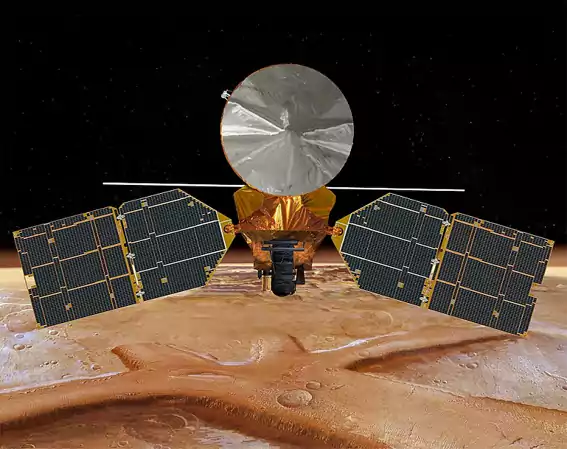NASA’s Mars Reconnaissance Orbiter Achieves Breakthrough in Probing Mars’ Interior
Launched in 2005, NASA’s Mars Reconnaissance Orbiter (MRO) has made a technological breakthrough in studying the Red Planet’s subsurface. By performing experiments using extreme tilt angles, the SHARAD radar aboard the spacecraft has been able to “see” up to 1.5 kilometers deep—three times deeper than its usual capability.
SHARAD (Shallow Radar) has been exploring Mars’ underground layers since 2006. However, its placement on the side of the spacecraft opposite the cameras meant engineers had to use tilt angles of up to 28° to improve signal quality. In 2023, Nathaniel Patzig and his team at the Planetary Science Institute proposed a bold new approach: increasing the tilt angle to 120°, which simulations suggested would boost signal clarity by about 10 decibels (dB).
Since May 2023, MRO has carried out three “Very Large Roll” (VLR) maneuvers with impressive results. In the low-dielectric Medusae Fossae region, the radar penetrated 800 meters, revealing basal layers that hold clues to Mars’ climate history. In the Ultimi Scopuli ice plains, the signal reached 1,500 meters, uncovering new details about the structure of polar sediments. Even in the challenging high-dielectric environment of the Amazonis Planitia region, researchers refined data on a previously known subsurface layer.
The signal strength improved by 9, 11, and 14 dB during the three experiments, respectively. This enhancement not only allowed for deeper penetration but also produced sharper images of Mars’ interior layers, including reflections throughout the entire ice layer of Ultimi Scopuli.
“We’ve only seen fragments of Mars’ geological record before. Now SHARAD is opening up whole chapters,” Patzig said.
In the coming months, the MRO team plans to perform additional VLR maneuvers over polar regions, mid-latitude glaciers, and volcanic zones. These efforts aim to improve understanding of ice distribution, volcanic history, and the evolution of Mars’ climate.
Despite being operational for 18 years, MRO remains a vital tool for NASA, both for scientific discovery and for supporting Mars rovers by relaying up to 90% of their data back to Earth.
 Source: NASA
Source: NASA
